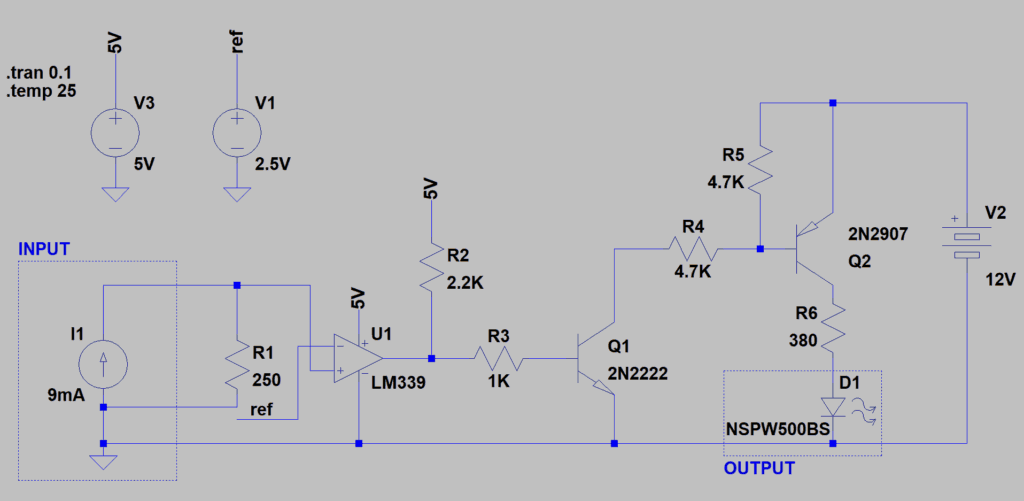A circuit simulator is a tool for “seeing” what a circuit does. In comparison to mechanical machines such as a bicycle and a lever, electronics cannot be easily inspected by the naked eye.
When you look at a bicycle you can observe it and see that stepping on the pedals makes a chain turn, and that this chain moves the bicycle wheels.
In contrast, if you open up an audio amplifier, it will be really hard to tell what it does if you don’t have previous experience in designing and building electronic circuits.
Simulating To Understand A Circuit
Circuit simulators give you the flexibility to look at the voltage and current of every wire and component in a circuit.
If you are having trouble understanding a circuit, you can try drawing it up in a circuit simulator such as LTSpice (free). You can change the input voltage and components parameters and see how the circuit reacts. And this will give you an idea of what the circuit does.
Circuit Simulator Example
I’ve created a circuit that might be difficult to understand for electronics beginners. But by using a circuit simulator you can figure out the function of it and how its individual parts work:
Instead of having many images and long texts, I have made a video to go through the explanation of how to use LTSpice to figure out the function of this circuit. I am not telling you what it does, it’s in the video 
To download the simulation file click this link
Remember that you have to add the LM339 to the components library in order for the simulation to work.
How To Understand What A Circuit Does
In summary, in order to find out how a circuit works through simulation you should:
1. Think in terms of I/O:
If you are analyzing an analog circuit, then its main purpose will be to take an input signal, process it and output it as something else.
Find out what’s the input parameter, change its value and see how it affects the output. This way you will find out what’s the primary function of the circuit.
2. Divide the circuit into stages (if applicable):
Some analog circuits do more than one kind of processing, they could convert a current into a proportional voltage signal and then output another voltage to trigger a switch after a certain amount of time has passed.
Analog functions can do: conversion, switching, timing, filtering, amplifying, attenuating and more. In order to understand how your circuit works, divide it into stages so you can analyze each stage individually.
What you are basically doing is creating a smaller structure where you can apply the I/O principle again.
3. Analyze each stage:
Change the input parameter and the components values and see how it affects the output, probing different parts of the circuit. This way you will see and find out how this circuit works and relates to the rest of the bigger picture.
Hopefully, after reading this article and watching the video, you have one more tool in your arsenal as an electronics maker.
Copyright Build Electronic Circuits

No comments:
Post a Comment